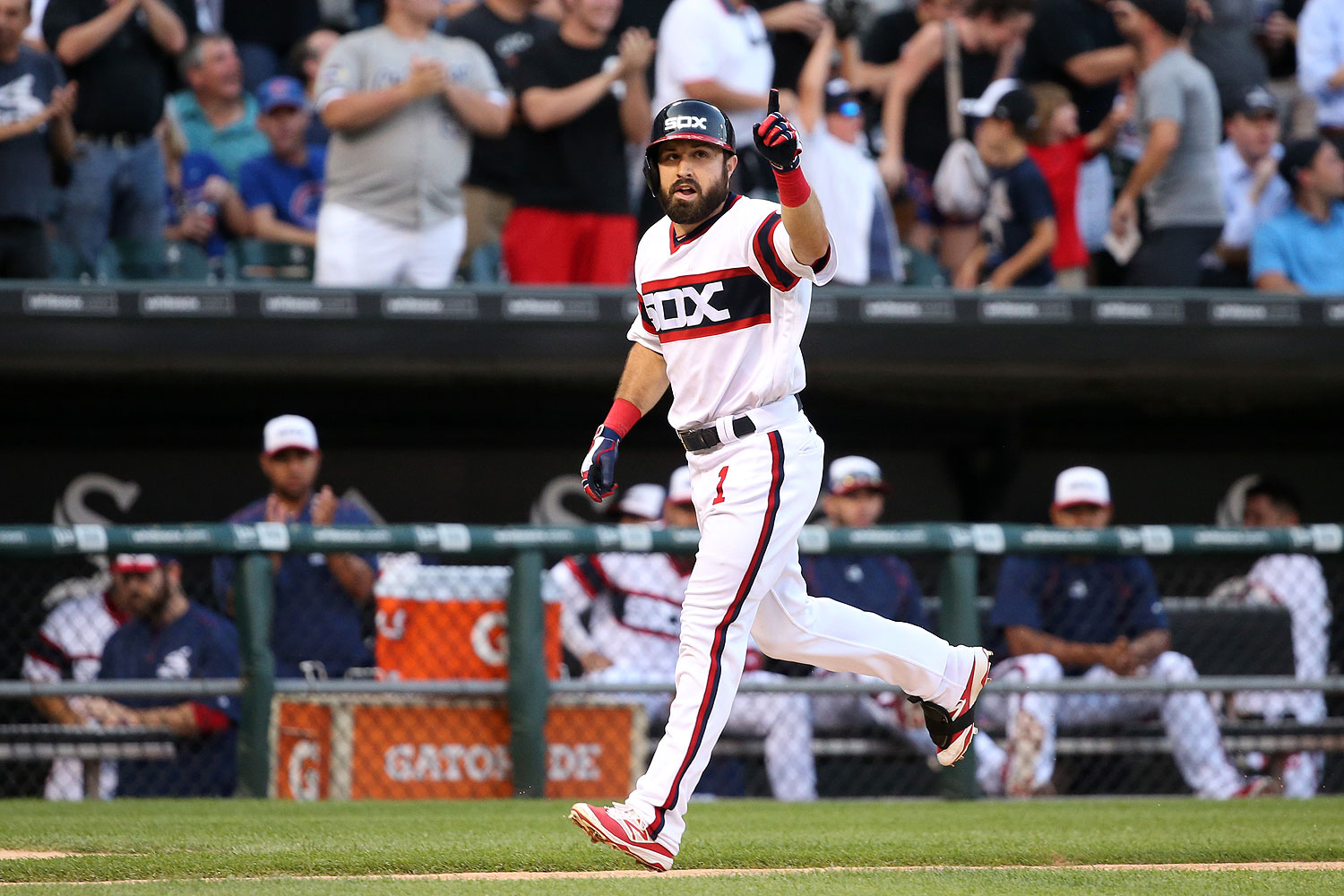For the past few years, the White Sox have tried to execute a plan: build around a core of a couple stars with theoretically reliable veterans. Sometimes it's seemed like it would almost work, like last year, when they were briefly very good and extremely lucky; sometimes it's been a slog, when those veteran pieces have been surprisingly terrible (Austin Jackson and James Shields in 2016, Melky Cabera and Adam Laroche in 2015, Adam Dunn in 2013).
And for years, a "laughing stock" of a farm system has meant filling in that framework with some of the worst players in baseball. Compare that to Cleveland, a team so robust that they survived losing two of their best pitchers to injury and two failed veteran acquisitions of their own, Michael Bourn and Nick Swisher, to nearly win the World Series. It's been a high-wire act, and the Sox have fallen off year after year.
Now they've veered in the complete opposite direction. A couple days ago, they had two star players (combined 11.2 WAR in 2016 per Fangraphs) on extremely good contracts (a combined $16 million in 2017), all but guaranteed to provide incredible value—at, say, $8 million per win in 2017, $40 to $50 million in value wouldn't have been out of the question in 2017.
Now they're gone, and the Sox have the Nos. 1, 3, 30, and 38 top prospects from MLBPipeline's top-100 rankings. When the week began, their best prospects were No. 58 (Carson Fulmer) and No. 80 (Zack Collins). The two headliners acquired for Chris Sale and Adam Eaton, Yoan Moncada and Lucas Giolito, have each been ranked as the top prospect in baseball in the recent past.
Giolito was the main target in last night's trade that sent Adam Eaton to the Washington Nationals. In April, Baseball Prospectus ranked him as the third-best prospect. In May, Keith Law ranked him as the best prospect in the game. In July, Baseball America had him at No. 4. Scouts and writers love Giolito. When Eric Longenhagen wrote him up for Fangraphs in June as "earth's best young arm," he wrote:
This is the best pitching prospect in baseball. Elite size, velocity and a potentially elite curveball with the requisite athleticism both to throw strikes and develop a, not only acceptable, but potentially impactful changeup. Giolito is the rare minor-league pitcher who, based purely on grading out stuff, has top-of-the rotation upside.
But those elite grades have so far translated into pedestrian numbers. In 14 games at Double-A last year, Giolito walked 4.31 batters per nine innings. In seven at Triple-A, he cut that down to a respectable 2.41, and got promoted to the majors—where he got shelled. Giolito walked 12, struck out 11, and gave up seven home runs in 21.1 innings.
It's a small sample size for a young pitcher—he's just 22, and lost time after high school for Tommy John surgery—but evaluators have started to back off Giolito. Like Jeffrey Paternostro at Baseball Prospectus:
Since we started filing eyewitness reports at Baseball Prospectus in 2013, our prospect writers have submitted exactly five carrying an OFP 80 [overall future potential; 80 is a superstar].
All five were on Lucas Giolito.
Five reports, by four different evaluators, across thirteen months. And a few hundred words from now, we are going to amend those with: “Well, about that…”
And Jeff Sullivan at Fangraphs, just a few days ago:
Giolito’s entered that transition period, and he had a miserable brief debut in the major leagues. That then shed further attention on the fact that, even in the minors, Giolito was seldom so dominant. That would be something on its own, but this is coupled with Giolito’s stuff not looking like it used to. There’s a widening gap between Giolito’s prospect ranking and his probable reality.
Sullivan estimates that a pitching prospect around Giolito's recently estimated caliber is worth $70 million. If Adam Eaton averaged $30 million in value over the rest of his contract, he'd be worth about $112 million in surplus value. The second player in the trade, pitcher Reynaldo Lopez, is ranked No. 38 by MLBPipeline and No. 92 by Baseball America. By Kevin Creagh and Steve DiMiceli's calculations, that makes Lopez worth $16 to $30 million. The last player, Dane Dunning, was just drafted in June, so he's hard to project, but he's a well-regarded first-round pick.
You get the idea. If Giolito is as good as people think he could be, the math works out, but it's probably a riskier trade than the Sale trade.
Of course, the Sox probably aren't done. As a number of reporters have pointed out, like Sahadev Sharma and Jon Heyman, practically everyone is on the table. David Robertson provides decent value in an overheated relief market. Jose Abreu could make sense to move as he gets further away from his peak. Todd Frazier could make a good one-year piece for a team. Jose Quintana could bring in a package comparable to Sale and Eaton, sending the Sox's farm system even further up the ranks. Now that the goal is no longer a perpetual outside shot at the playoffs, anything's possible.



